-
 Bitcoin
Bitcoin $108,489.6704
1.13% -
 Ethereum
Ethereum $2,502.0528
2.92% -
 Tether USDt
Tether USDt $1.0002
0.00% -
 XRP
XRP $2.1941
0.51% -
 BNB
BNB $655.3375
1.00% -
 Solana
Solana $151.5977
1.27% -
 USDC
USDC $0.9999
0.00% -
 TRON
TRON $0.2768
0.32% -
 Dogecoin
Dogecoin $0.1676
2.86% -
 Cardano
Cardano $0.5675
0.98% -
 Hyperliquid
Hyperliquid $40.6109
7.48% -
 Bitcoin Cash
Bitcoin Cash $500.7746
2.09% -
 Sui
Sui $2.8328
2.03% -
 Chainlink
Chainlink $13.4452
1.26% -
 UNUS SED LEO
UNUS SED LEO $9.1623
0.39% -
 Avalanche
Avalanche $18.2267
2.24% -
 Stellar
Stellar $0.2382
0.00% -
 Toncoin
Toncoin $2.8885
1.68% -
 Shiba Inu
Shiba Inu $0.0...01159
0.91% -
 Litecoin
Litecoin $87.1827
0.88% -
 Hedera
Hedera $0.1511
2.90% -
 Monero
Monero $315.4992
-0.59% -
 Polkadot
Polkadot $3.4663
2.34% -
 Bitget Token
Bitget Token $4.6118
-0.65% -
 Dai
Dai $1.0000
-0.01% -
 Ethena USDe
Ethena USDe $1.0003
0.02% -
 Uniswap
Uniswap $7.2989
4.69% -
 Pepe
Pepe $0.0...01003
5.73% -
 Aave
Aave $275.5616
7.15% -
 Pi
Pi $0.5181
-2.49%
What are HTX's contract liquidation rules?
HTX's contract liquidations involve partial and full closures based on margin levels, with fees deducted from remaining margin upon liquidation.
Apr 04, 2025 at 10:08 am
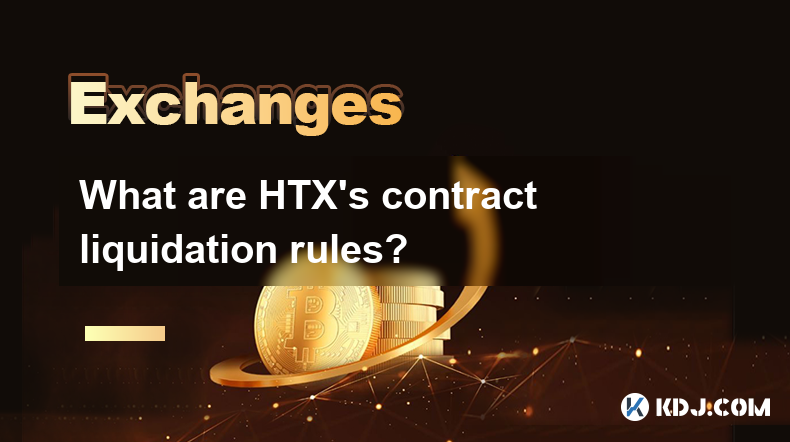
Introduction to HTX's Contract Liquidations
HTX, formerly known as Huobi, is a prominent cryptocurrency exchange known for its diverse range of trading products, including futures and options contracts. One of the critical aspects of trading on HTX is understanding the rules surrounding contract liquidations. Liquidation occurs when a trader's position is forcibly closed due to insufficient margin to cover potential losses. This article delves into the specifics of HTX's contract liquidation rules, providing a comprehensive guide for traders.
Understanding Margin and Leverage
Before diving into the liquidation rules, it's essential to understand the concepts of margin and leverage. Margin is the amount of collateral required to open and maintain a position, while leverage allows traders to control a larger position with a smaller amount of capital. On HTX, traders can use leverage up to 125x, which significantly amplifies both potential profits and losses.
Types of Liquidations on HTX
HTX employs two types of liquidations: partial liquidation and full liquidation. Partial liquidation occurs when a trader's position is partially closed to bring the margin level back to the maintenance margin requirement. Full liquidation, on the other hand, results in the complete closure of the position when the margin level falls below the liquidation margin.
Maintenance Margin and Liquidation Margin
The maintenance margin is the minimum amount of margin required to keep a position open. If the margin level falls below this threshold, the position is at risk of liquidation. The liquidation margin is the point at which the position is automatically liquidated. On HTX, the maintenance margin is typically set at 0.5% of the position value, while the liquidation margin is set at 0.3%.
How Liquidation Works on HTX
When a trader's margin level approaches the maintenance margin, HTX's system will issue a margin call, prompting the trader to add more funds to their account. If the trader fails to meet the margin call, the position will be partially liquidated to restore the margin level to the maintenance margin. If the margin level continues to decline and reaches the liquidation margin, the position will be fully liquidated.
Liquidation Price Calculation
The liquidation price is the price at which a position will be liquidated. HTX calculates the liquidation price based on the entry price, the amount of leverage used, and the maintenance margin requirement. The formula for calculating the liquidation price for a long position is:
[ \text{Liquidation Price} = \frac{\text{Entry Price}}{(1 + \text{Maintenance Margin})} ]
For a short position, the formula is:
[ \text{Liquidation Price} = \frac{\text{Entry Price}}{(1 - \text{Maintenance Margin})} ]
Risk Management Strategies
To avoid liquidation, traders can employ several risk management strategies. One effective method is to use stop-loss orders, which automatically close a position when the price reaches a predetermined level. Another strategy is to monitor margin levels closely and add more funds to the account when necessary. Additionally, traders can reduce leverage to lower the risk of liquidation.
Impact of Market Volatility
Market volatility can significantly impact the likelihood of liquidation. During periods of high volatility, prices can fluctuate rapidly, increasing the risk of margin levels falling below the maintenance margin. Traders should be aware of market conditions and adjust their positions accordingly to mitigate the risk of liquidation.
Liquidation Fees and Costs
When a position is liquidated, HTX may charge a liquidation fee to cover the costs associated with closing the position. The fee is typically a small percentage of the position value and is deducted from the remaining margin. Traders should be aware of these fees and factor them into their trading strategies.
Examples of Liquidation Scenarios
To illustrate how liquidation works on HTX, consider the following examples:
Example 1: Long Position Liquidation
- A trader opens a long position on BTC/USDT with an entry price of $30,000 and 10x leverage.
- The maintenance margin is 0.5%, and the liquidation margin is 0.3%.
- The liquidation price is calculated as: ( \frac{30,000}{(1 + 0.005)} = 29,850.75 ).
- If the price of BTC/USDT falls to $29,850.75, the position will be liquidated.
Example 2: Short Position Liquidation
- A trader opens a short position on ETH/USDT with an entry price of $2,000 and 20x leverage.
- The maintenance margin is 0.5%, and the liquidation margin is 0.3%.
- The liquidation price is calculated as: ( \frac{2,000}{(1 - 0.005)} = 2,010.05 ).
- If the price of ETH/USDT rises to $2,010.05, the position will be liquidated.
Frequently Asked Questions
Q: Can I avoid liquidation by adding more funds to my account during a margin call?
A: Yes, if you receive a margin call, you can add more funds to your account to bring the margin level back above the maintenance margin and avoid liquidation.
Q: What happens to my remaining margin after a full liquidation?
A: After a full liquidation, any remaining margin in your account will be returned to you, minus any applicable liquidation fees.
Q: How can I check my current margin level on HTX?
A: You can check your current margin level by navigating to the "Positions" section of your HTX account, where you will find detailed information about your open positions and margin levels.
Q: Is there a way to set a custom liquidation price on HTX?
A: No, HTX does not allow traders to set a custom liquidation price. The liquidation price is automatically calculated based on the entry price, leverage, and maintenance margin.
Disclaimer:info@kdj.com
The information provided is not trading advice. kdj.com does not assume any responsibility for any investments made based on the information provided in this article. Cryptocurrencies are highly volatile and it is highly recommended that you invest with caution after thorough research!
If you believe that the content used on this website infringes your copyright, please contact us immediately (info@kdj.com) and we will delete it promptly.
- Jasmy Coin, Bitcoin, and the Rise of Solaris Presale: What's the Buzz?
- 2025-06-30 18:30:12
- Wintermute, Bitcoin Lending, and Cantor Fitzgerald: A New Chapter?
- 2025-06-30 16:30:12
- Polkadot: From Ethereum Killer to Ghost Chain? The Crypto Fading Phenomenon
- 2025-06-30 16:50:12
- Bitget Lists NodeOps (NODE) for Spot Trading: A New Era for DePIN?
- 2025-06-30 16:30:12
- Warren Buffett, Bitcoin, and the Oracle of Omaha's Evolving Views
- 2025-06-30 16:35:12
- Blockchain, Bitcoin, and Holdings: Navigating the Crypto Landscape in Style
- 2025-06-30 17:10:11
Related knowledge
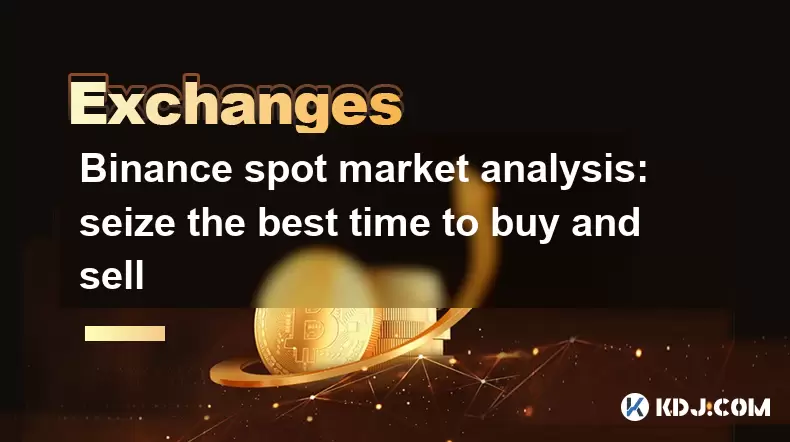
Binance spot market analysis: seize the best time to buy and sell
Jun 19,2025 at 04:56pm
Understanding the Binance Spot MarketThe Binance spot market is one of the most popular platforms for cryptocurrency trading globally. It allows users to trade digital assets at current market prices, making it essential for traders aiming to buy low and sell high. Unlike futures or margin trading, spot trading involves direct ownership of the asset aft...
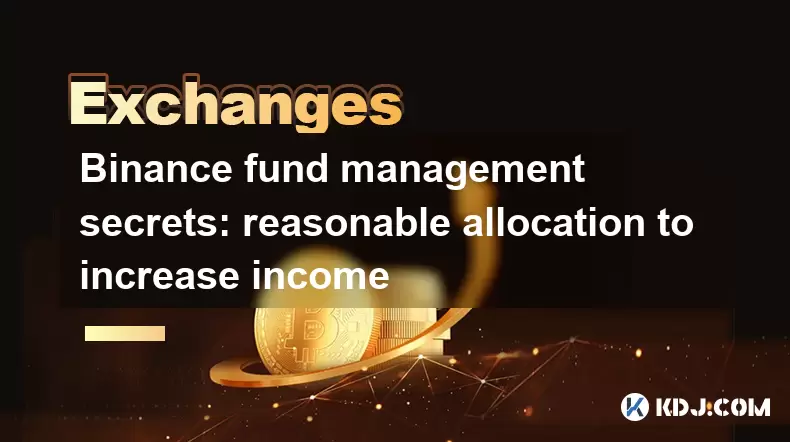
Binance fund management secrets: reasonable allocation to increase income
Jun 22,2025 at 02:29pm
Understanding Binance Fund ManagementBinance fund management involves strategic allocation of your cryptocurrency assets to optimize returns while managing risk. The key to successful fund management lies in understanding how different investment options on the Binance platform can be utilized to create a diversified portfolio. This includes spot tradin...
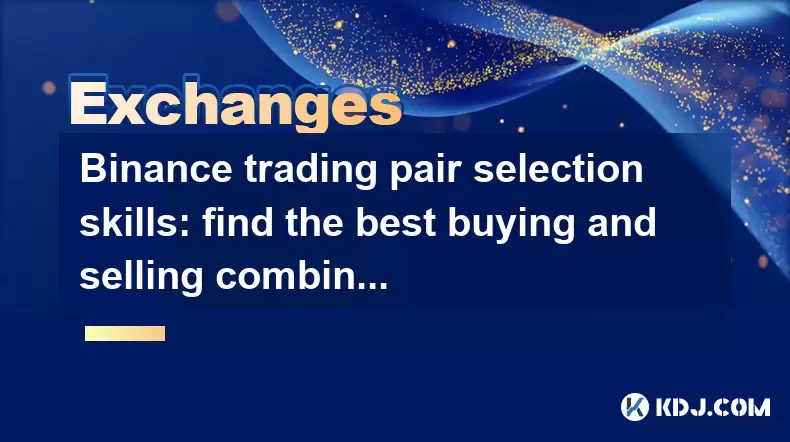
Binance trading pair selection skills: find the best buying and selling combination
Jun 23,2025 at 02:49am
Understanding the Basics of Trading Pairs on BinanceBefore diving into trading pair selection skills, it's essential to understand what a trading pair is. On Binance, a trading pair refers to two cryptocurrencies that can be traded against each other. For example, BTC/USDT means Bitcoin is being traded against Tether. Each trading pair has its own liqui...
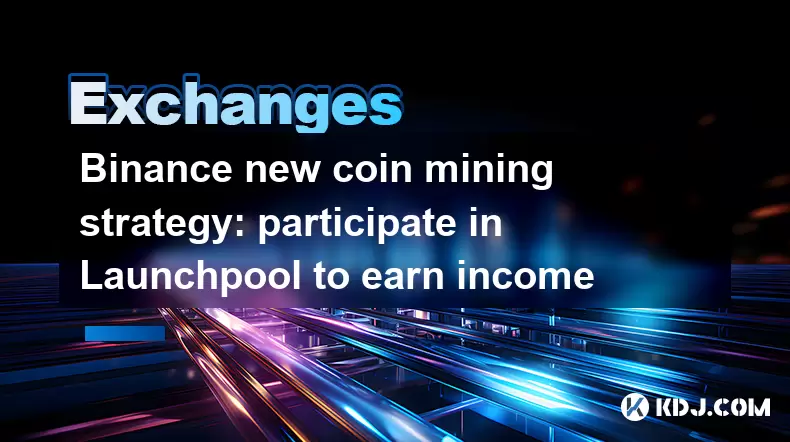
Binance new coin mining strategy: participate in Launchpool to earn income
Jun 23,2025 at 11:56am
What is Binance Launchpool and how does it work?Binance Launchpool is a feature introduced by the world’s largest cryptocurrency exchange, Binance, to allow users to earn new tokens through staking. This platform enables users to stake their existing cryptocurrencies (such as BNB, BUSD, or other supported assets) in exchange for newly launched tokens. T...
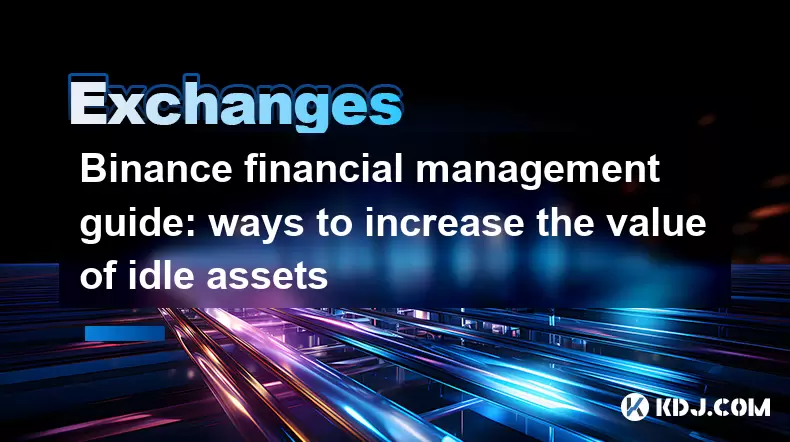
Binance financial management guide: ways to increase the value of idle assets
Jun 19,2025 at 11:22pm
Understanding Idle Assets in the Cryptocurrency SpaceIn the fast-paced world of cryptocurrency, idle assets refer to digital currencies that are not actively being used for trading, staking, or yield farming. Holding these funds in a wallet without utilizing them means missing out on potential growth opportunities. Binance, as one of the leading platfor...
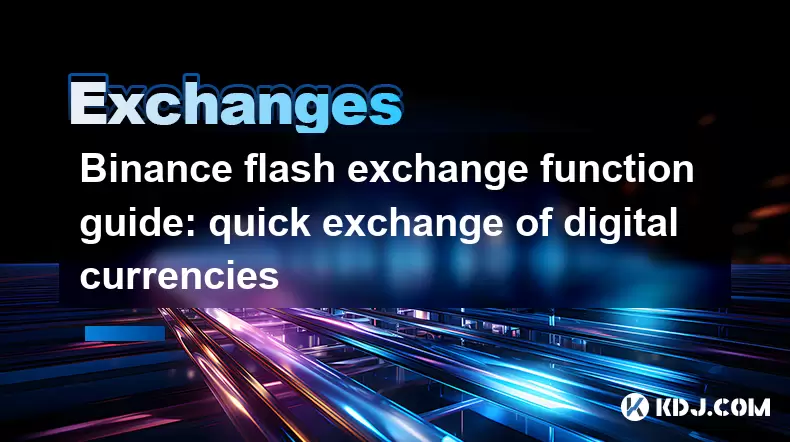
Binance flash exchange function guide: quick exchange of digital currencies
Jun 23,2025 at 12:29pm
What is the Binance Flash Exchange Function?The Binance Flash Exchange function is a powerful tool designed to allow users to instantly swap between supported cryptocurrencies without the need for placing traditional buy/sell orders. This feature simplifies the trading process by offering a direct exchange mechanism, eliminating the requirement to conve...

Binance spot market analysis: seize the best time to buy and sell
Jun 19,2025 at 04:56pm
Understanding the Binance Spot MarketThe Binance spot market is one of the most popular platforms for cryptocurrency trading globally. It allows users to trade digital assets at current market prices, making it essential for traders aiming to buy low and sell high. Unlike futures or margin trading, spot trading involves direct ownership of the asset aft...

Binance fund management secrets: reasonable allocation to increase income
Jun 22,2025 at 02:29pm
Understanding Binance Fund ManagementBinance fund management involves strategic allocation of your cryptocurrency assets to optimize returns while managing risk. The key to successful fund management lies in understanding how different investment options on the Binance platform can be utilized to create a diversified portfolio. This includes spot tradin...

Binance trading pair selection skills: find the best buying and selling combination
Jun 23,2025 at 02:49am
Understanding the Basics of Trading Pairs on BinanceBefore diving into trading pair selection skills, it's essential to understand what a trading pair is. On Binance, a trading pair refers to two cryptocurrencies that can be traded against each other. For example, BTC/USDT means Bitcoin is being traded against Tether. Each trading pair has its own liqui...

Binance new coin mining strategy: participate in Launchpool to earn income
Jun 23,2025 at 11:56am
What is Binance Launchpool and how does it work?Binance Launchpool is a feature introduced by the world’s largest cryptocurrency exchange, Binance, to allow users to earn new tokens through staking. This platform enables users to stake their existing cryptocurrencies (such as BNB, BUSD, or other supported assets) in exchange for newly launched tokens. T...

Binance financial management guide: ways to increase the value of idle assets
Jun 19,2025 at 11:22pm
Understanding Idle Assets in the Cryptocurrency SpaceIn the fast-paced world of cryptocurrency, idle assets refer to digital currencies that are not actively being used for trading, staking, or yield farming. Holding these funds in a wallet without utilizing them means missing out on potential growth opportunities. Binance, as one of the leading platfor...

Binance flash exchange function guide: quick exchange of digital currencies
Jun 23,2025 at 12:29pm
What is the Binance Flash Exchange Function?The Binance Flash Exchange function is a powerful tool designed to allow users to instantly swap between supported cryptocurrencies without the need for placing traditional buy/sell orders. This feature simplifies the trading process by offering a direct exchange mechanism, eliminating the requirement to conve...
See all articles

























































































